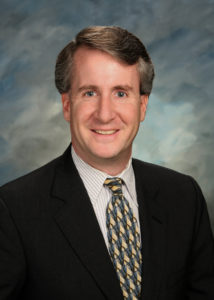By Jessica Estes, MSW, Community Organizer at Missourians Organizing for Reform and Empowerment (MORE)
This column was originally published in The St. Louis American.
America is in crisis, and it is of a constant yet varied nature. Multiple natural disasters, mass shootings, civil unrest, racial tension and political discourse dominate every media outlet and every conversation with friends and family. One could be so overwhelmed by the state of our nation that one crisis may be unintentionally overlooked or overshadowed.
When regime change happens in America—when there is a new presidential election—priorities change. One such priority change grossly decreases the Environmental Protection Agency’s (EPA) budget. In relation to the other crises at hand, the state of the EPA could be easily put on the back burner. But the EPA budget cuts will have atrickle-down effect on us here in St. Louis, so we must advocate for environmental justice.
The EPA defines environmental justice as fair treatment and meaningful inclusion regardless of race, color, national origin, or income with respect to the development, implementation, and enforcement of environmental laws, regulations, and policies.
The EPA’s Environmental Justice Program funds local projects. Dutchtown South Community Corporation and Trailnet are two local organizations utilizing those funds for the betterment of the community.
The Environmental Defense Fund (EDF) reports the $81 million Missouri receives in grants from the EPA is in jeopardy. In 2016, the EPA provided Missouri with $3.6 million to keep our drinking water safe; 2.5 million Missourians rely on the EPA to keep their drinking water safe. Unfortunately, the Trump administration intends to strike these funds from the budget. Where does that leave Missourians?
The EPA budget cuts impact us all, but vulnerable populations stand to lose the most. Missouri has 1,022 Brownfield sites, which are sites that have a presence of hazardous substances, contaminants or pollutants. The Trump Administration has proposed decreasing EPA’s clean-up initiatives. Funding to Brownfield sites will be slashed more than 20 percent.
There is a high concentration of these Brownfield sites in predominantly black and low- to moderate-income neighborhoods—for example, Wellston and Jeff-Vander-Lou. The median household income in Wellston ranges from $16,912 to $30,250. In Jeff-Vander-Lou, median household incomes are as low as $9,732. This is not by happenstance. This is the manifestation of environmental racism.
When low-income individuals and minorities are relegated to living in close proximity to toxic and hazardous waste, including urban decay, we call this environmental racism. The environment in and of itself is not racist. However, the institutions that mediate environmental hazards and disasters, such as the EPA, are led by people, who establish priorities based on personal bias and prejudices. Nationally, consider the handling of the aftermath of Hurricane Katrina; locally, consider the handling of the Clemens Mansion.
The EPA provides us with a number of services that improve our quality of life. It is imperative that we ensure those services continue. We must hold the Trump Administration accountable and demand environmental justice.
***
Jessica Estes, MSW obtained her Master of Social Work, concentrating on social and economic development and policy. She utilizes her social work skills and knowledge as a new community organizer at Missourians Organizing for Reform and Empowerment (MORE). A St. Louis native, Jessica is committed to working for transformative social policy, so everyone in this city can have a high quality of life. She believes your values manifest in how you spend your time. Jessica sits on the base-building committee for the Organization for Black Struggle (OBS) and volunteers with Missouri Jobs with Justice (JwJ).
***
Articles in “From the Field” represent the opinions of the author only and do not represent the views of the Community Builders Network of Metro St. Louis or the University of Missouri-St. Louis.
We invite readers to contribute to the civic conversation about community development in St. Louis by writing an op-ed for the Community Builders Exchange. Op-eds should be short (400-700 words) and provocative. If you have an idea for an op-ed, contact Todd Swanstrom at swanstromt@umsl.edu.


















